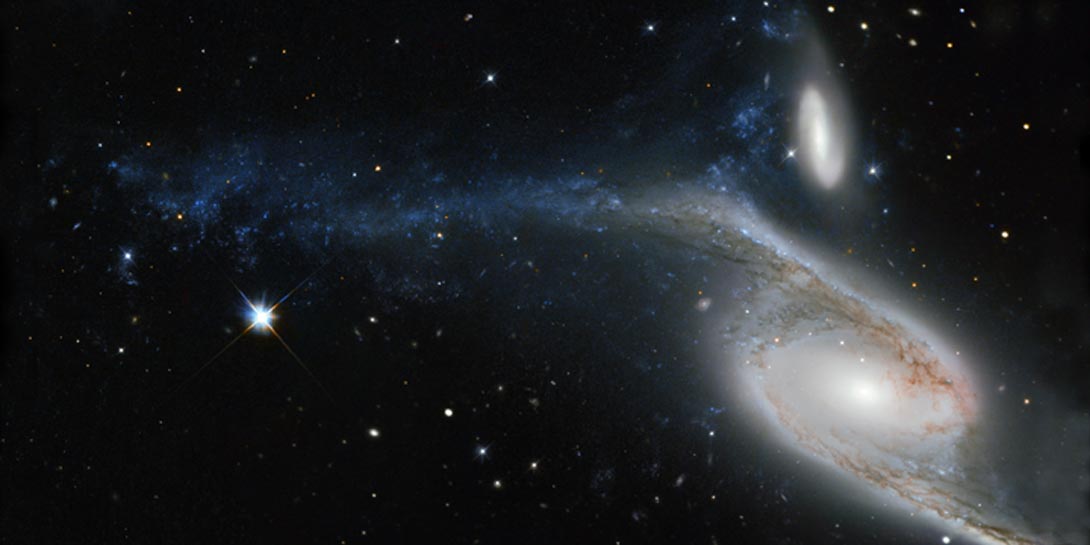
Interacting Galaxy
RA 20h 17m 11.72s Dec -70° 45' 23.28"
Pavo
300 million light years
10.7
6.0 x 1.7 arcmin
4.32 x 2.32 arcminutes
North is 5.8° left of vertical
ESA/Hubble & NASA, Ack: Judy Schmidt
September 15, 2014
Related images: G9924 G0912 G1437 2014 image: NGC 6872
ABOUT THIS IMAGE:
This picture, taken by the NASA/ESA Hubble Space Telescope's Wide Field Planetary Camera 2 (WFPC2), shows a galaxy known as NGC 6872 in the constellation of Pavo (The Peacock). Its unusual shape is caused by its interactions with the smaller galaxy that can be seen just above NGC 6872, called IC 4970. They both lie roughly 300 million light-years away from Earth.
From tip to tip, NGC 6872 measures over 500,000 light-years across, making it the second largest spiral galaxy discovered to date. In terms of size it is beaten only by NGC 262, a galaxy that measures a mind-boggling 1.3 million light-years in diameter! To put that into perspective, our own galaxy, the Milky Way, measures between 100,000 and 120,000 light-years across, making NGC 6872 about five times its size.
The
upper left spiral arm of NGC 6872 is visibly distorted and is populated
by star-forming regions, which appear blue on this image. This may have
been be caused by IC 4970 recently passing through this arm - although
here, recent means 130 million years ago! Astronomers have noted that
NGC 6872 seems to be relatively sparse in terms of free hydrogen, which
is the basis material for new stars, meaning that if it weren't for its
interactions with IC 4970, NGC 6872 might not have been able to produce
new bursts of star formation.
From Wikipedia:
NGC 6872, also known as the Condor Galaxy, is a large barred spiral galaxy of type SB(s)b pec in the constellation Pavo. It is 212 million light-years (65 Mpc) from Earth and is approximately five billion years old. NGC 6872 is interacting with the lenticular galaxy IC 4970, which is less than one twelfth as large. The galaxy has two elongated arms; from tip to tip, NGC 6872 measures 522,000 light-years (160,000 pc), making it one of the largest known spiral galaxies. It was discovered on June 27, 1835 by English astronomer John Herschel.